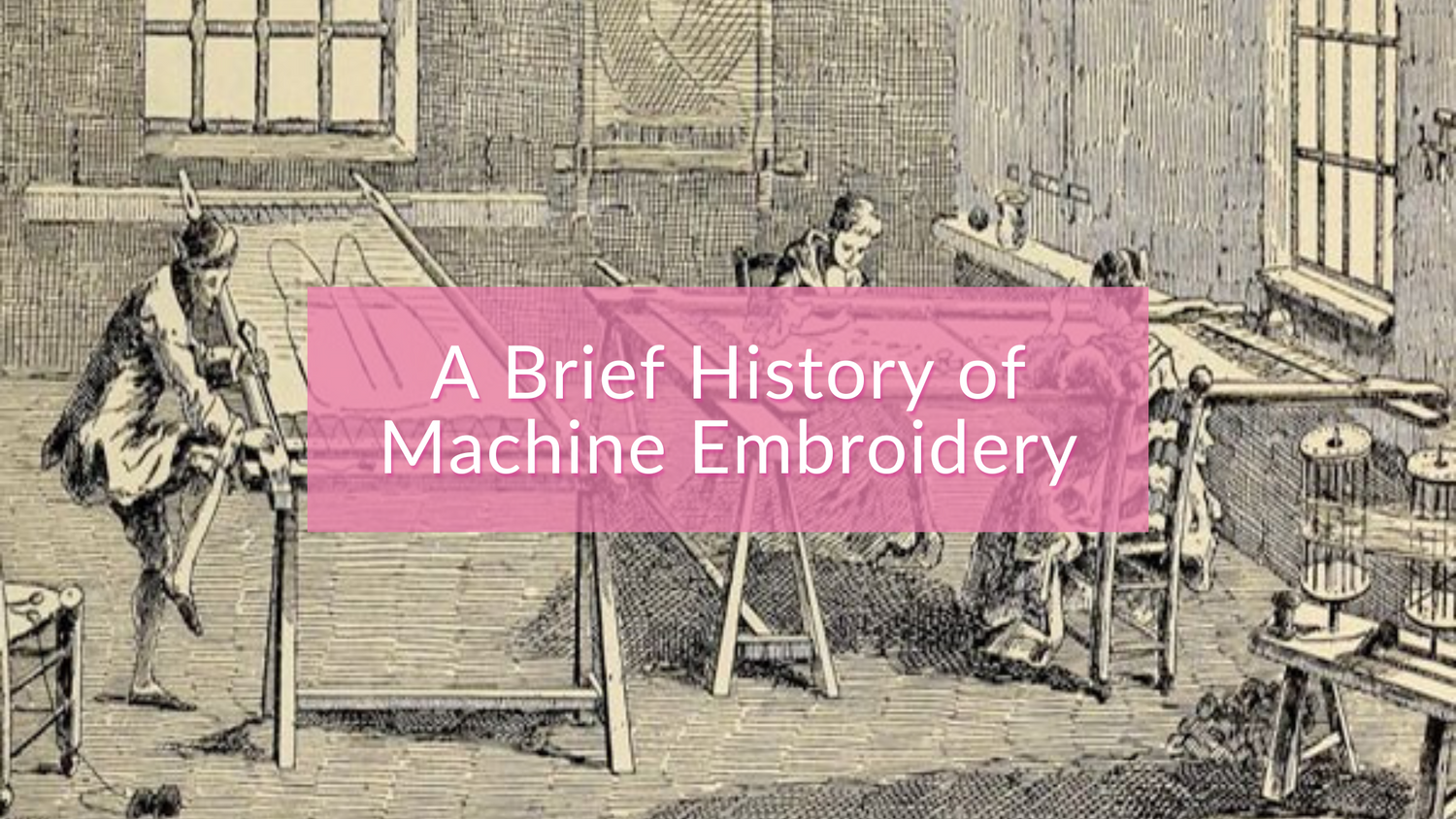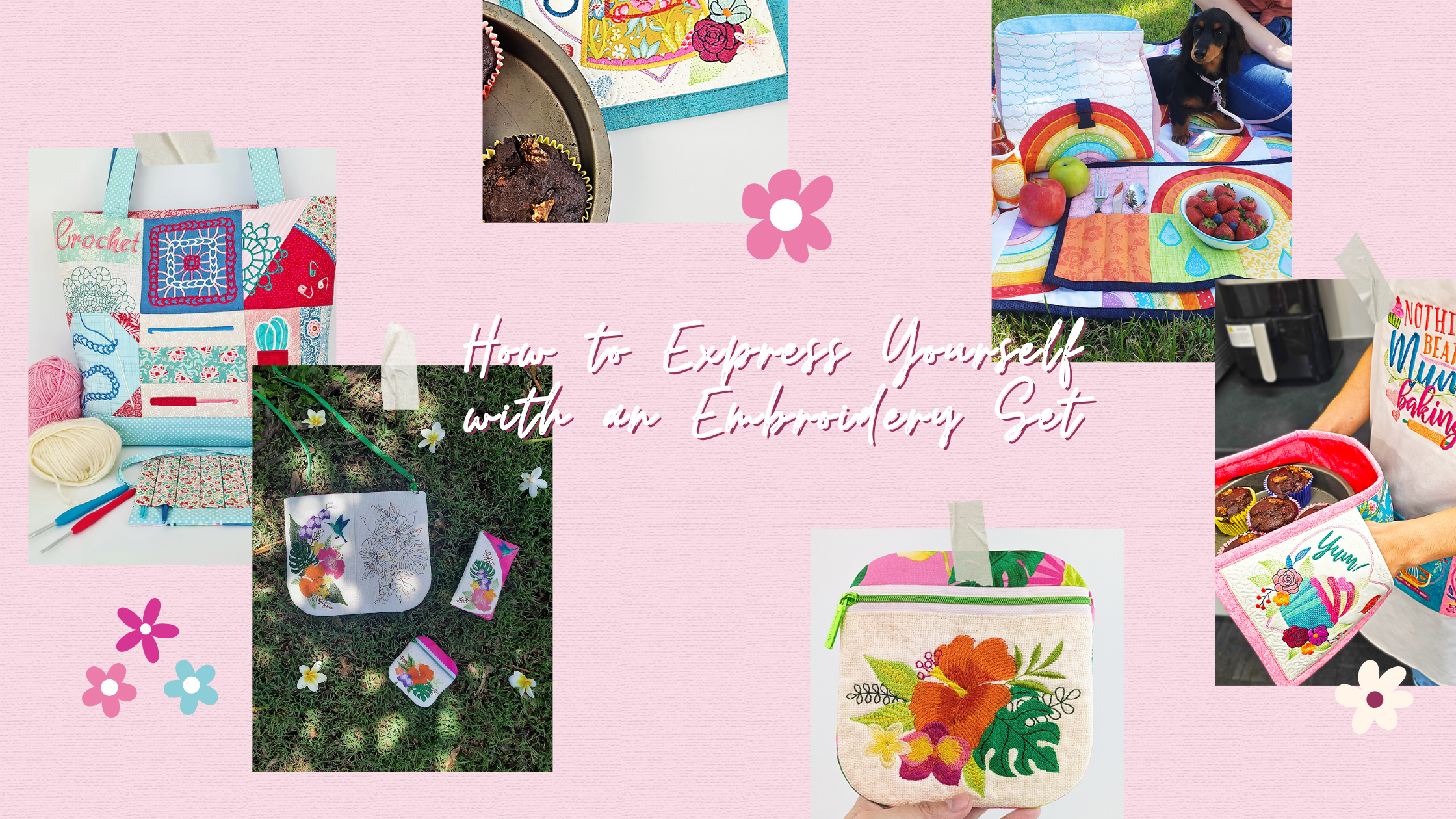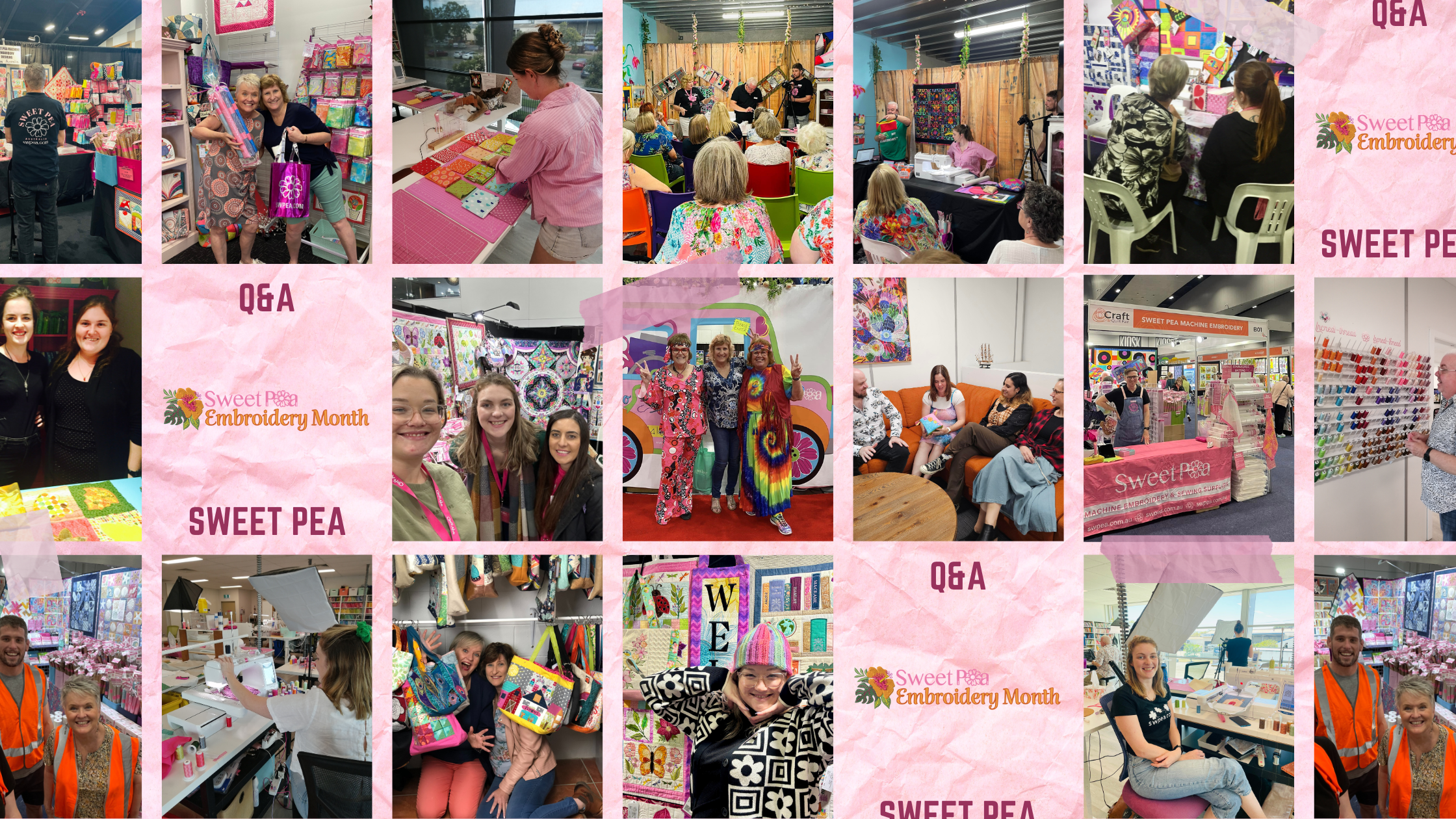An ancient craft, the embroidery of long ago is incredibly different to what we see today. Modern embroidery machines have come a long way since their much slower, bulkier counterparts, but these machines are an essential stepping stone to what we have today. Let's dive a little into the history of these machines.
Embroidery Machines
The hand embroidery machine was in fact created before the first sewing machine! In 1846, Josue Heilmann created a machine that could do the work of up to four hand embroiderers, with a frame to hold the fabric, a needle assembly, and a handle to work the needle. The fabric moved to the needle, rather than the other way round and could embroider using more than 300 needles simultaneously. It was considered such a threat to hand embroidery that there were only two machines ever made.

Almost two decades later, the Schiffli embroidery machine was invented by Isaak Grobli in 1863. The machine enabled the mass production of embroidered textiles, using punch cards to control embroidery patterns. Lace and broderie anglaise were made in no time by these machine, while fooling many that they were hand embroidered.
But it wasn't until the 20th century that embroidery machines became more commonplace in the home. In 1911, the Singer Sewing Company developed the first multi-head embroidery sewing machine. While war saw the development of these machines halt, the 1950s had a resurgence in home embroidery machines, and by the 1980s, Wilcom introduced the first computerized embroidery designs both home and small business embroiderers.

Since then, machine embroidery has grown in leaps and bounds, with Brother Industries entering the market in the late 1980s. Today, there is such a huge variety of machines that there is something for everyone, with machines having integrated computers and the ability to design just about anything then stitch it out if you know how!
Embroidery Styles
Embroidery itself has also expanded dramatically in the past few decades. While today you can make almost anything with a machine, in the past, there were a few types of machine embroidery that were most prevalent.
Continuous Quilting - this refers to a design where the pattern is made with one continuous line. Traditionally this was done with a sewing machine but now you can purchase machine embroidery designs that can create these patterns for you. We released a Sweet Pea flower themed one for our anniversary last year, and have several other designs that make great filler pieces in quilts.

Clothing Applique - machine embroidery was most commonly used to create and decorate clothing in its first commercial iterations. Even today, commercial clothing embroidery is very common. We love the versatility of an applique or embroidery design - you can put it on just about anything!

Redwork - also called needle artwork, this form of embroidery was developed in the 19th century and is still popular today. As the name suggests, it typically uses red thread, although today you can use other colours if the style remains similar, which you can see in our redwork designs.

While these more traditional styles of embroidery are still popular, today embroiderers can make anything from table runners and quilts, to bags and stuffed toys! The options are really endless, as long as you have a good design.
The history of embroidery is rich, and machine embroidery, while relatively young, has come so far. We can't wait to see where it goes in the next 10 years to come!




4 comments
Sue Ogilvy-white
Very interesting
Thanks
Jan Hayes
Loved reading the interesting history of embroidery machines! 😊
Alleta Baltes
Very interesting articles. I loved learning about history of machine embroidery. Thank you. 😊
Jan
Hi,
I found this article on Machine Embroidery History very interesting. I didn,t
know that they had embroidery machines way back when.
Cheers Jan
Leave a comment
All comments are moderated before being published.
This site is protected by hCaptcha and the hCaptcha Privacy Policy and Terms of Service apply.